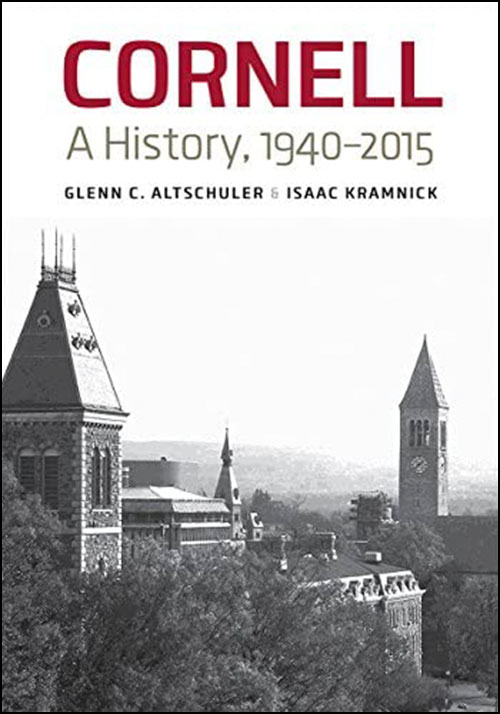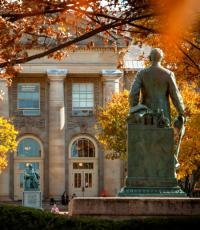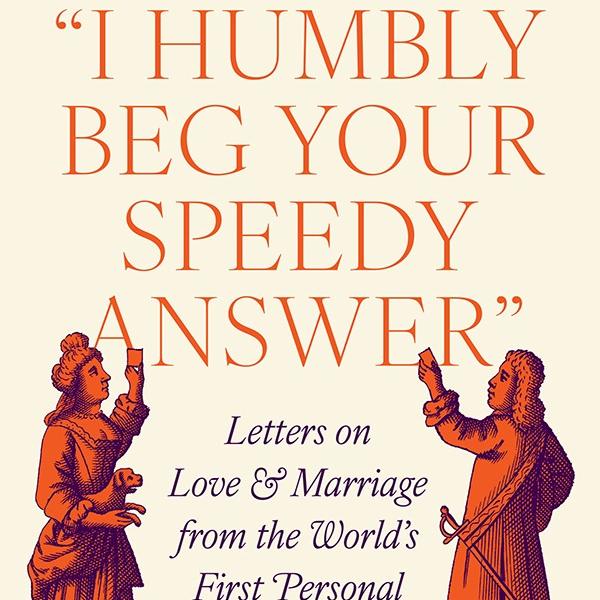Need a present for the Cornellian on your list? Here are titles on University history, traditions, songs, famous alums—even recipes! Most of these books are available through the Cornell Store, as well as from other online outlets.
As the authors write in their preface: “The history of Cornell since World War II, we believe, is in large part a set of variations on the narrative of ‘freedom,’ the removal of restriction and regulation, and its partner, ‘responsibility,’ the obligation to others and to one’s self to do what is right and useful, with a principled commitment to the Cornell community—and to the world outside the Eddy Street gate.”
Cornell ’69
This examination of one of the seminal events in University history—the armed occupation of Willard Straight Hall by Black students on parents’ weekend in spring 1969—was penned by history alumnus Donald Downs ’71.
Now a professor emeritus of political science at the University of Wisconsin, Madison, Downs was an undergrad when the takeover unfolded.
But his book, published by Cornell University Press, also takes a broader view; subtitled Liberalism and the Crisis of the American University, it contemplates issues beyond the Hill.
“Cornell ’69 is an electrifying account of that weekend which probes the origins of the drama and describes how it was played out not only at Cornell but on campuses across the nation during the heyday of American liberalism,” says the publisher—adding that Downs relates how Cornell “became the battleground for the clashing forces of racial justice, intellectual freedom, and the rule of law.”
It includes an early history of playing on Beebe Lake; coverage of traditions and rivalries; and reminiscences of games by players and coaches.
Written by A&S alumnus Jim Roberts ’71—former editor-publisher of Cornell Alumni Magazine and a longtime hockey fan—with veteran Lynah announcer Arthur Mintz ’71, also A&S, it boasts a foreword by legendary Big Red and NHL goalie Ken Dryden ’69.
Postwar Cornell
This volume by A&S history graduate Brad Edmondson ’81—drawn in large part from oral histories gathered for the 65th Reunion of the Class of 1950—recalls the Hill in the years following World War II.
Subtitled How the Greatest Generation Transformed a University, 1944–1952, it showcases the perspectives of more than 100 alumni and friends, through their photos, letters, diary entries, and more.
“Much would change in student life at the University in the immediate postwar years, and the catalyst was in large part the G.I. invasion,” Professor Kramnick writes in the foreword.
“This would coincide with a profound transformation of the very soul of the place, as Presidents Day and Malott changed Cornell from a collegiate ‘halls of ivy’ training ground for educated gentlemen and ladies, schooled in ‘gracious living,’ to a world class ‘research university’ driven by Big Science.”





